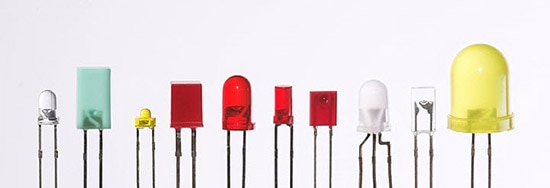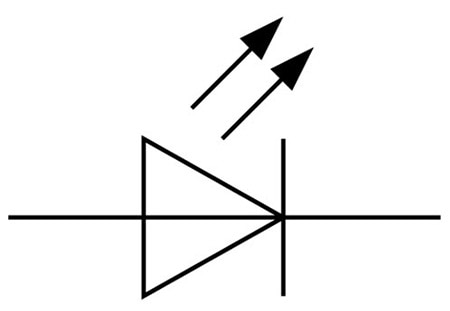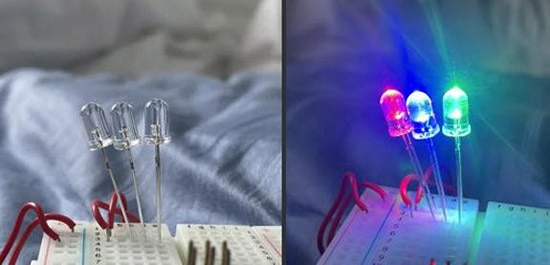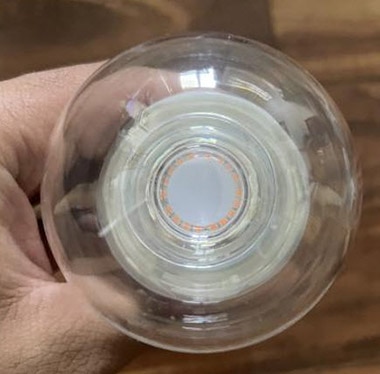Shining Some Light onto LEDs!
2023-12-01 | By Antonio Velasco
What in the World are LEDs?
Light Emitting Diodes, or LEDs, are everywhere. In light bulbs, TVs, and possibly even the screen that you’re looking at this on! Chances are you’ve heard the term before and most likely even used it in an electronics project–but if you’ve got a wandering mind like mine, you’ve probably wondered how they work and what they even are. That’s what we’ll go over today! Pulling back the curtain on one of the most common parts found on a breadboard!
What is the Light Emitting Diode?
The light-emitting diode is, as the name suggests, a diode that emits light. We covered diodes more in-depth in a previous blog post. To summarize, a diode is essentially a semiconductor that dictates a one-way road, meaning that current can only flow in one direction through it. A light-emitting diode has this semiconductor device as well which releases photons—the visible light that we see. Regular diodes also release photons, but they tend to be in a wavelength (infrared) that is not visible to our eyes. Something else that’s pretty cool is that you’ll notice that diodes sometimes get hot after a while–this is because the casing of the diode is absorbing the IR waves. LEDs, however, don’t tend to get hot very easily, as the photons are released in light that scatter and aren’t absorbed by a casing. This is also why LED light bulbs are a lot more preferable than incandescent lights—they don’t heat up very easily and are much more efficient.

Notably, LEDs only work in one direction in terms of current flow just like a diode, meaning that you’ll need to place the leads in the right order (anode to positive, cathode to negative). The longest lead/metal wire of the LED will always be the anode. Additionally, the flat part of the LED casing will also indicate the anode.
The schematic symbol of an LED is as follows:

You’ll notice that it is almost exactly the same as a regular diode, except the arrows are pointing away from it, representing the photons.
LEDs are available in different colors! As you can see with the LEDs, I got from DigiKey (linked below!), they all have a clear lens but light up different colors.

This can be due to a number of different reasons, ranging from semiconductor doping to temperature or even the energy gap of the photons, but in the end it, all chalks up to the wavelength of light released. Different wavelengths have different colors. For example, purple/bluish colors tend to have a wavelength of 400nm, whereas red has a wavelength of 700nm.
You’ll also notice a great deal of LEDs have a colored casing that matches the color, making it easy to identify them without having to power them up first. There are also LEDs with 4 leads and 3 separate LEDs inside of them—one for R, G, and B. This allows you to mix colors and change them as you can supply current to each individual lead and make some brighter or darker. This is similar to how today’s screens work, as you look super closely at a screen, you’ll notice that they’ll all show RGB—the brightness of each differentiating to display a specific color. The more electrons, the brighter!
The LEDs that I showed are quite small, but the majority of LEDs these days are super super small–like an ant. If you ever open up a light bulb, you’ll see a ton of smaller diodes inside, bundled up together to create a ton of light.

If you look closely, you can see a ring of LEDs all bundled up with each other!
Whenever you use an LED, make sure that you use a resistor with it! Check the specs for an LED before you use it and pick out an appropriate resistor, otherwise, you might burn it out.
Hopefully, this shines some light (haha, get it?) on what LEDs are and how they work! If you’re interested in other diodes or simply an introduction to them, see the articles below!
Zener Diodes - The Voltage Police!

Have questions or comments? Continue the conversation on TechForum, DigiKey's online community and technical resource.
Visit TechForum











 中国
中国